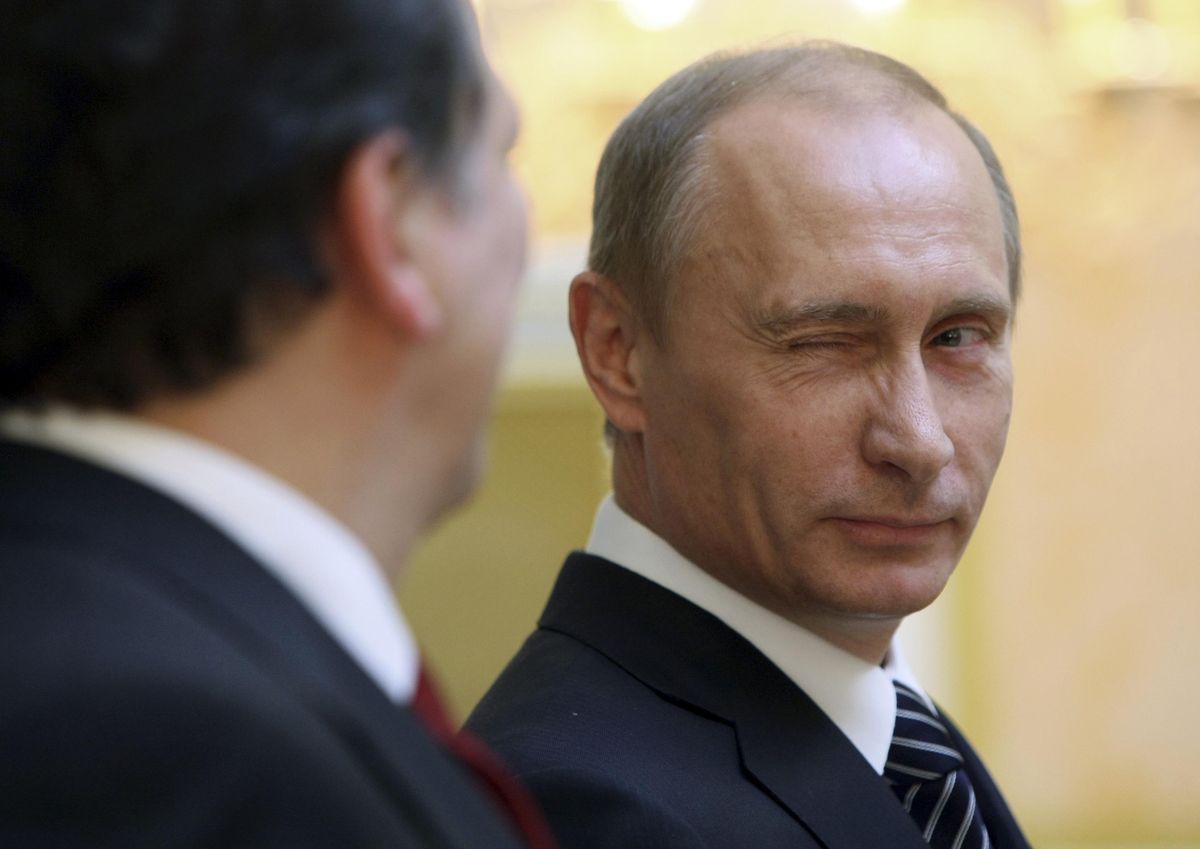No one knows whether Russian President Vladimir Putin plans on invading Ukraine. But the president of the United States sure seems to think this is a real possibility, saying Wednesday that Putin will likely "move in" in the near term. Biden, prone to political gaffes, was then forced to awkwardly walk back comments that Russia would face milder consequences from the West in the event of a "minor incursion."
The timing of this blunder is... not great. It comes just as US Secretary of State Antony Blinken prepares to meet his Russian counterpart on Friday in hopes of lowering the temperature after recent diplomatic efforts in Geneva were deemed a failure by Moscow.
Indeed, with the Kremlin having amassed at least 100,000 troops surrounding Ukraine on three sides, the growing threat is impossible to ignore. So what would a Russian military offensive into Ukraine actually look like, and how might the West respond?
How far might Putin go?
Most analysts agree that it’s extremely unlikely that Putin will launch a wholesale invasion of Ukraine, which, given the immediate expense and likely Western response, would prove a very costly exercise that could push Russia into recession. Indeed, a full-scale occupation would also be a hard sell to the Russian public, because large numbers of Russians troops would return home in body bags. Putin knows that a Ukrainian insurgency in urban areas could drag on for a long time, leading to a mounting death toll.
If Russian forces do advance further into Ukraine, they could annex the Donbas region already held by Russian separatists and seize adjacent territory to create a buffer. But this would come with serious economic consequences for Russia, which would then have to provide basic services for millions of poor residents who live in its newly acquired territory.
And even a limited Russian offensive could lead to a significant refugee crisis, as was the case in 2014 when Russia invaded Crimea, displacing about 1.4 million people. This time, many Ukrainians might try to cross into Russia or flee to nearby states like Poland and Belarus, creating a refugee crisis that reverberates through Eastern and Central Europe. Though this would mainly be a problem for the European Union, Putin can predict the potential diplomatic and geopolitical consequences for Russia.
What would Washington do about it?
The Biden administration has made clear that it will not send American troops to defend Ukraine, which is not a NATO ally, but would impose fresh — and harsher – economic sanctions to punish the Kremlin. Unlike in the past when Washington has mainly targeted Russian oligarchs, sanctioning Russian financial institutions and sovereign debt — which could include all international entities that lend Russia money – is also on the table.
But in order to really make Moscow hurt, Washington needs the Europeans to match the sweeping sanctions it has floated (about one-third of Russia’s current reserves are in euros). Indeed, Biden reiterated this Wednesday: "I’ve got to make sure everybody’s on the same page as we move along.” But currently, Europe, which imports 45 percent of its gas from Russia, does not seem to be in lockstep with Washington. Moscow could cut off crucial supplies during a frigid winter (it wouldn’t be the first time that Putin has used natural gas supplies to create geopolitical leverage).
The stakes are particularly high for Germany, which is seeking to certify the Nord Stream 2 pipeline that would keep even more natural gas flowing from Russia. The new leader of Germany’s opposition, and Angela Merkel’s successor as head of the CDU party, has rejected Washington’s proposal, saying that American threats to cut Russia off from the international banking system would do “a lot of harm” to Western economies.
The NATO equation
If tensions continue growing in the coming weeks, NATO could reinforce its troops in parts of the Baltic and Black Seas, which could lead to an (unwanted) military confrontation with Russia. Moreover, it’s likely that NATO and Washington will transport large supplies of Western-made weapons to help Ukrainians fight back against Russian attacks. Still, because Ukraine is not a NATO member state, the alliance is under no obligation to defend it — and most of the major decision-making will likely fall to Washington and Brussels. (Biden also came under fire this week for suggesting that NATO unity was a concern in dealing with Russian aggression.)
What’s more, a Russian attack could cause states like Finland and Sweden to rush to join the alliance – precisely the kind of additional NATO pressure at Russia’s borders that Putin claims threatens Russia’s security.
An invasion is hard to imagine. But so is the prospect of Vladimir Putin backing off without at least the appearance of a major concession from NATO.
- Putin has a “noose” around Ukraine, says Russia analyst Alina Polyakova - GZERO Media ›
- The problem with China’s Zero COVID strategy | GZERO World Podcast - GZERO Media ›
- Will Putin invade Ukraine? - GZERO Media ›
- Europeans suggest reviving Minsk Agreement to resolve Ukraine Crisis - GZERO Media ›
- Petraeus: Taking Ukraine is one thing, holding onto it is another - GZERO Media ›
- Minsk agreement a path to resolving Ukraine crisis - GZERO Media ›
- War in Ukraine - GZERO Media ›
- Russian invasion of Ukraine begins - GZERO Media ›






